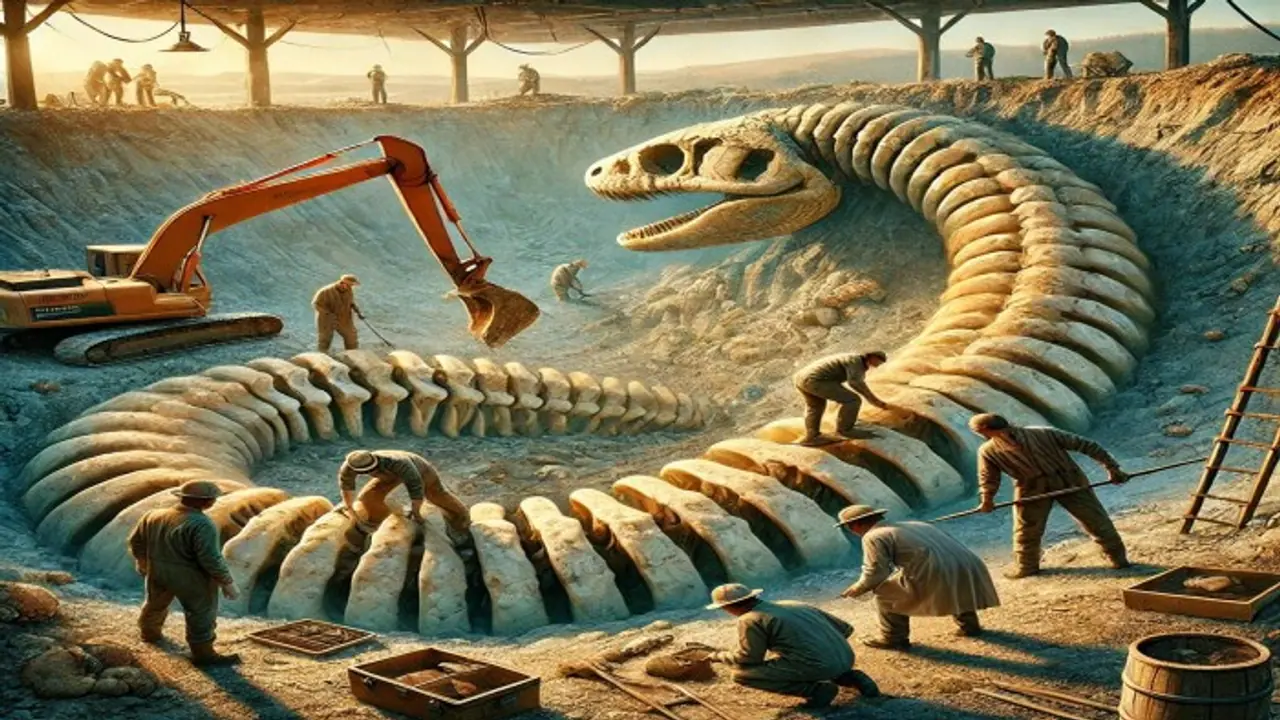Researchers from the Indian Institute of Technology Roorkee (IIT-Roorkee) recently analyzed fossils of an extinct snake species that may have been one of the largest serpents to have ever existed.
For centuries, Hindu mythology has revered Vasuki, the mighty serpent king coiled around Lord Shiva’s neck, as a symbol of strength, power, and divine protection. Now, in a fascinating turn of events, science has uncovered an ancient real-life counterpart — Vasuki indicus, a colossal snake that once roamed prehistoric India nearly 47 million years ago.

Discovery of a prehistoric titan
Researchers from the Indian Institute of Technology Roorkee (IIT-Roorkee) recently analyzed fossils of an extinct snake species that may have been one of the largest serpents to have ever existed. Measuring between 36 and 50 feet in length, this gigantic reptile surpasses even modern-day anacondas and pythons in size, according to a report in Times of India (TOI). The discovery was made in Gujarat, where a total of 27 fossilized vertebrae were excavated from a coal mine back in 2005.
Originally, the fossils were mistakenly identified as belonging to a prehistoric crocodile-like reptile. However, a re-examination in 2022 revealed their true nature— an ancient snake species with a broad, cylindrical body, much like the infamous Titanoboa, a 42-foot-long serpent that lived in South America around 60 million years ago, the TOI report said.
Also read: India reports first H5N1 bird flu cases in cats, sparking pandemic fears
A Creature of mythical proportions
The scientific team named the newly identified species Vasuki indicus, paying homage to the legendary serpent of Hindu mythology. This awe-inspiring discovery connects the world of ancient reptiles with deep-rooted cultural and religious narratives.
But what allowed Vasuki indicus to grow to such enormous lengths? Scientists believe that the Earth's warmer climate during that era played a crucial role. With an average temperature of 28°C (82°F), the environmental conditions may have accelerated the metabolism and growth rates of cold-blooded reptiles, enabling Vasuki to reach its remarkable size.
A lethal predator of the ancient world
Like modern boas and pythons, Vasuki indicus was likely an ambush predator that relied on constriction to subdue its prey. Fossil evidence suggests that it shared its habitat with ray fish, catfish, turtles, crocodiles, and even early whales, indicating a thriving prehistoric ecosystem. While its exact diet remains unknown, Vasuki indicus may have preyed upon some of these animals, cementing its status as a formidable predator.
A groundbreaking discovery
The revelation of Vasuki indicus marks a major breakthrough in paleontology, shedding light on the ancient reptilian giants that once dominated Earth. The findings, published in the journal Scientific Reports, not only reshape our understanding of prehistoric snakes but also highlight India’s rich paleontological history.
This discovery raises intriguing questions—Could even larger snakes have once existed? What other prehistoric giants remain hidden beneath our feet? One thing is certain: the story of Vasuki, once thought to belong only to mythology, has now taken a thrilling new turn in the world of science.
